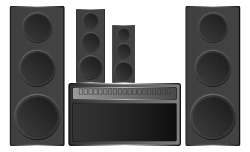Audiophiles seem to revel in minor controversies – vinyl vs CD’s, tubes versus solid state, capacitor, wires, magic dots… and negative feedback. At one extreme (“objectivists” and engineers), the position is that “feedback makes amplifiers perfect”. At the other extreme (“subjectivists”) usually claim that “feedback is a menacing succubus that sucks the life out of the music, leaving a dried husk, devoid of soul”. Accusations are occasionally made that objectivists can’t hear, and conversely that subjectivists hear things that aren’t there.
Audio, Distortion and Feedback document has some some simple tutorial, comments and a discussion of phenomena associated with complexity in distortion created by nonlinear gain stages, negative feedback, and the audio signal. This is good reading for anybody interested in audio and electronics.
Negative feedback is very successful in stabilizing amplifier circuits and lowering distortion to very tiny numbers as measured by distortion analyzers. Feedback needs to be used in the right way to avoid Transient Intermodulation Distortion (TIM), also called slew rate distortion. In high quality modern amplifiers the open loop response is at least 20 kHz, canceling TIM distortion.

0 Comments
Be the first to post a comment.